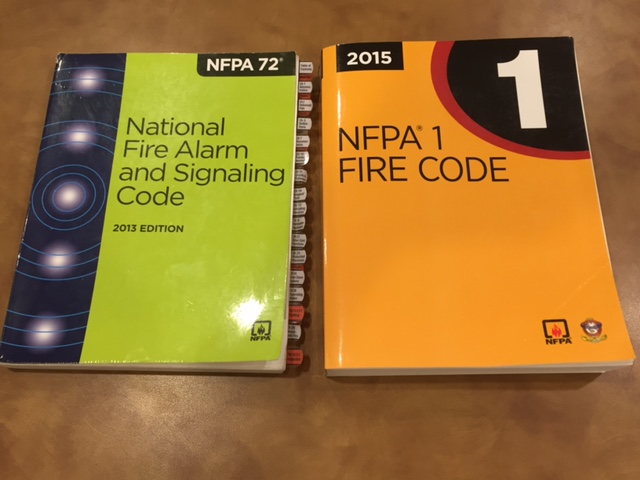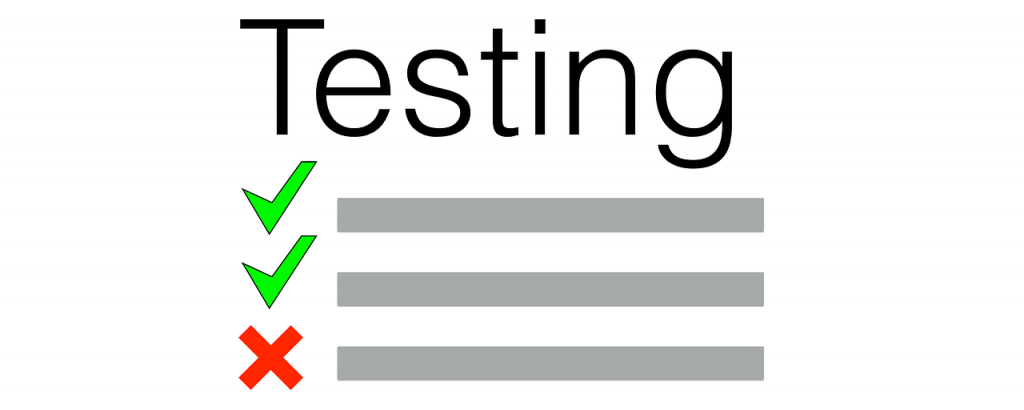If you’ve followed our blog, you know that we pay quite a bit of attention to fire security and safety. This area of security has the potential to not only help you keep your property safe, but to save a life as well. For this reason, fire security is extremely regulated and well-monitored. In fact,we must follow many regulations and industry-related standards when instaling this equipment. In this post, we’ll discuss exactly what it takes to add fire security to your business.
First, we’ll explain exactly how we go about designing and installing a fire alarm system. These alarms alert anyone in your building to fire-related danger. Additionally, a monitored fire alarm system will also create an immediate fire department dispatch. From there, we’ll look at the testing and maintenance of both fire detection and fire extinguishing devices. Regulations around fire security require regular inspections of this equipment. Therefore, we’ll share how we go about performing and documenting these tests. Now, let’s dive in and see what it takes to install a commercial fire alarm.
Installing Alarm-Based Fire Security
When looking into adding fire security to your business, you will likely consider the prospect of adding a fire alarm. These systems can perform a couple important tasks. First and foremost, they alert anyone inside a building to a potential fire emergency. Additionally, they also allow for manual activation through the use of stations installed near exits. In this section, we’ll look at how we approach installing a fire alarm. First, we’ll look at adding the minimum amount of required fire security for any application. From there, we’ll see why and where our customers ask for added detection.

The Fire Alarm and Signaling and Fire Codes created by the National Fire Protection Association lay the foundation for laws that govern fire system installation and monitoring.
Fire Code-Based Equipment Requirements
Several months ago, we created a post sharing Basic Fire Alarm Components. In that post, we explain the roles of the various devices that we install as part of a complete fire alarm. These devices include detection-based equipment, or “initiating devices.” These include heat and smoke detectors that create an alarm response upon detecting an issue. They also include pull stations for manual fire alarm activation. Additionally, fire alarms also include “notification devices.” This equipment includes sirens and strobe lights to notify you in case of an emergency. Obviously, we must install sufficient equipment to both detect and alert occupants to a fire. However, many people do not realize how we determine the placement and number of these devices.
When we design a fire system, we do so using guidelines set by the National Fire Protection Association (or “NFPA”). Additionally, we also follow guidelines set by the International Building Code (or “IBC”) created by the International Code Council, also known as the “ICC.” These codes create guidelines for fire alarm installation based on factors such as a building’s use and occupancy. The guidelines help ensure that any threat to public safety gets detected and relayed to the public quickly.
When we design a fire alarm, we submit our plans to the bulding department for approval. Receiving approval means that we have correctly followed the fire codes in our system creation. Furthermore, an inspection after installation ensures that we’ve completed the installation properly and legally. Sometimes, customers want to add non-required equipment to their fire alarm. In the next section, we’ll look at installing equipment above and beyond that required by code.
Additional Detection
Many fire alarm customers ask us to install the minimal amount of required equipment. After all, these systems often carry a hefty price tag. The expense involved leads many to request the quickest and least-expensive fix available. However, we do not recommend taking this approach. After all, the cost of these systems generally pales in comparison to the potential damages caused by a fire. For this reason, we often suggest finding additional places to add heat and smoke detection.
For example, IT closets have expensive electronics that could easily start a fire. The combination of combustible electronics and valuable equipment make these areas a great place to add heat and/or smoke detection. Additionally, we also recommend installing fire detection and extinguishing equipment in any room housing valuables, or any flammable chemicals or electronics. Taking the time to plan these locations out can help keep the most valuable and vulnerable areas of your business more secure. Next up, let’s look at how we keep all of your fire security equipment tested and maintained.
Fire Equipment Maintenance Measures
In addition to installing fire equipment, we must also test it annually. As you may expect, NFPA code requires these annual inspections. Additionally, these codes also determine how we must conduct and report the results of these inspections. In this section, we’ll describe the types of fire equipment tests that we perform most often. These include inspections of the fire systems that we described in the previous section. Additionally, we also inspect and maintain fire extinguishers, which carry their own set of regulations and methods for “passing” their annual inspection. Let’s start with a focus on fire alarm inspections.
Fire Alarm Equipment Testing
In order for a fire alarm to “pass” a test, each component of the alarm’s system must work properly. To test smoke detectors, we spray smoke on every detector to see if the detector activates. Additionally, activation of a commercial smoke detector will also activate a series of strobes and horns to alert occupants to a fire. Of course, we must ensure that all of these devices work as well. As we mentioned in the introduction, many of our fire alarm systems create a fire alarm dispatch. When we test a complete fire alarm, we also test this communication path to ensure that your system can call for help when needed.
NFPA Fire Alarm Reports
After finishing up with a fire alarm inspection, we create an itemized list of every piece of equipment we tested. Each piece of equipment receives a “pass” or “fail” grade. NFPA standards require us to maintain these records for one year after completing an inspection. After the inspection, we send our customer their full report. If we leave the inspection location and create a report with certain system components failed, we write a letter to the customer explaining what failed and what they must do to fix it.

The NFPA requires commercial fire alarm customers to receive annual testing, which in turn creates an item-by-item report on the results.
In many cases, the failed items do not represent a substantial portion of the alarm. In these instances, the responsibility lies with the system owner to fix the issue and have the alarm re-inspected. We do not have to report the failed test to the fire inspection at this point. However, the property owner could face legal issues down the road if they do not address the issues. A failed system component could affect the alarm’s effectiveness during a fire emergency. In turn, this could affect an insurance company’s willingness to cover damage caused by a fire. Furthermore, owners of properties that legally require fire alarms could run into legal issues if their neglect causes damage or loss of life.
Occasionally, we do have to fail a substantial portion of a fire alarm system. In these cases, customers have 8 hours to fix the issues at hand. After 8 hours, we must contact the customer’s local fire department and let them know about the issue. At that point, the fire department decides how to approach the situation. In extreme cases, they can even decide to have the building closed until the owners address the issue. Next, let’s check out the inspection process for fire extinguishers.
Extingusher Inspection and Maintenance
Just as with fire alarm components, commercial customers must have their fire extinguishers inspected annually. However, unlike fire alarm components, extinguisher inspecting does not involve truly “tesing” the extinguisher. After all, doing so would use up the extinguisher’s fire-fighting elements held inside! Instead, we inspect each extinguisher’s pressure gauge and exterior. Extinguishers that pass this inspection receive a “tag” with the current month and year for future reference.
Additionally, we perform more in-depth maintenance on most extinguishers every 6 years. During this maintenance, we must empty and recharge the extinguishers. Finally, we complete performance testing on most extinguisher types after 12 years. Failing to complete these services on time can lead to a couple different types of legal issues. For one, failing fire inspections can lead to fines.
Additionally, just as with fire alarm maintenance, lax extinguisher inspection practices can lead to insurance issues. If a business has a fire that could have been prevented or minimized by working fire extinguishers, insurance companies will want proof that the extinguishers on site had been properly maintained and inspected. Business owners who cannot provide this proof due to negligent extinguisher practices could well lose out on their insurance money.
Adding Fire Security to Your Business
We hope that this post helps you see what’s involved in adding fire security to your business! Additionally, we also encourage you to contact us with any security-related questions you may have. We will happily help design and install a system that meets fire codes as well as your own needs. Moreover, we invite you to take advantage of our free site survey program. We provide complimentary security audits and equipment codes to both new and existing customers alike. While on site, we can explain what equipment you’ll likely need to have us install. Additionally, we can discuss installing additional fire security based on your own unique application. Together, we can create a complete fire system to keep your business, and everyone in it, as safe and secure as possible!
